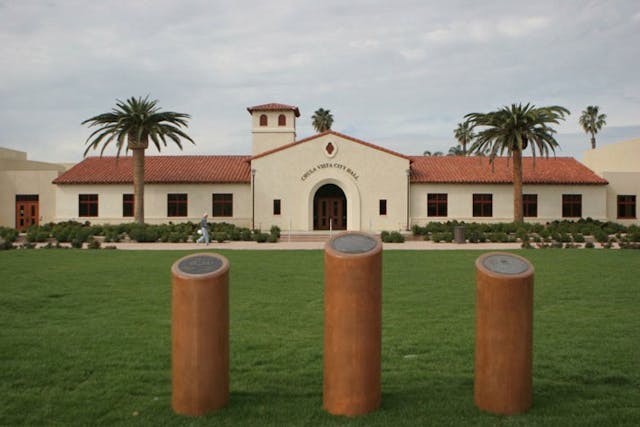Growing Peruvian mining: legal and illegal mining against global environment

Mining is a polemical issue and the pros and cons should always be weighed. Not casually, one of the poorest countries from South America has become the favorite of worldwide economists. You are wondering why? Last September the price of gold hit a record high of US$68 per gram and Peru received this news as a blessing. This country is the largest gold producer in Latin America and the sixth-largest worldwide. Over the past decade, the lack of employment opportunities in rural areas, the building of an interoceanic highway (which now allows workers to travel straight from the ports of Brazil to the Peruvian coast) and the rising price of this metal converged in an epidemic of gold fever in the south-east of the country.
Today, the epicenter of the gold mining is Mother of God, “Madre de Dios” in Spanish, because of its 33,000 square miles of low-lying, dense rainforest containing the richest biodiversity on earth. Thousands of Andean peasants from the mountains around quickly flooded into the Amazon hoping to make it big and sustain their families or just buy a plot of land in their hometowns, with the promise of a better life in their minds.
In Madre de Dios, clandestine mines have boomed since the Great Recession of 2008. Recently, the Carnegie Institution for Science mapped the zone with airborne mapping and high-resolution satellite monitoring and discovered that the forest loss has tripled from 2,166 hectares per year before 2008 to 6,145 hectares each year. That’s roughly the size of half Orlando´s Walt Disney World!
But massive deforestation is not the only problem in the zone. Mining, big or small, legal or illegal, also brings poisoned water (affecting the entire food chain, including the food ingested by people), environmental degradation, soil erosion, destruction of natural habitats for wild animals, mercury poisoning (consequence of poisoned water and fish —such as the typical species in the zone: the mota and don-cella— which contain unhealthy mercury levels) and human-rights abuses.
Life of a gold miner is not the easiest. About 30,000 artisanal and small-scale miners work in this lush Amazonian area.
Desperate to support their families, they work standing waist-deep in muddy water, chewing coca leaves as a stimulant to overcome fatigue, hunger and thirst. Marco Suarez, a miner from Moque-gua in southern Peru, said “This is hell.
We’ve been in this spot a week and work sometimes 24 hours a day depending on how it goes. We find five, six, seven grams of gold a day, and I make up to 100 soles a day [£25]. We’re simply trying to survive. I wish there were other jobs”.
But adult miner workers are not just the only kind of worker who goes to the Amazon to find a job. There are lots of small girls who travel convinced that they are going to work in the surroundings, cleaning houses, taking care of children and then, they end up in prostitution. This last topic is a theme barely spoken, but the truth is that —as Alfonso Daniels wrote in The Telegraph from UK— “Every year an estimated 1,200 girls aged between 12 and 17 are drafted into child (…) brought from all over the country to brothels that have sprung up in the middle of mining camps, lured by the promise of jobs paying 10 times more than they would normally earn”. This situation is not typical just in Peru but in all the mining areas, as the Brazilian film “Angels of the Sun” (Anjos do Sol) portrayed.
Even though mining´s backers say that mining provides (temporary) employment for people who are unemployed in the mining regions (and well paying jobs), help to make significant local government taxes and leads to urbanisation and infrastructural development, the problem is not the mining itself —because we cannot stop 100% of the people consuming watches, earrings, gold bullion, and electronics— but that this activity has not being made in a more sustainable way. I´m talking about the mercury-amalgamation technique, which uses an estimated 45–50 tonnes of mercury to extract gold in Madre de Dios. The process works like this: miners combine mercury with sediments that contain gold —using their feet to mix them in a bucket or drum— to form a solid amalgam of the two metals. That is then heated in frying pans to boil off the mercury and leave gold behind. As the frying is made over open flames in non-ventilated spaces, there are a big proportion of people poisoned with mercury every day. Plus, as this technique have been used in gold mining for centuries, it is deeply difficult to dislodge this practice among artisanal miners.
According to the Journal of Health & Pollution, despite some alternatives to mercury-free technologies have been suggested over the years, more than ten million small-scale miners worldwide still use mercury to extract gold. Borax, for example, can be used as a flux is an effective and safer substitute for smelting gold out of heavy mineral concentrates.
ECO-100V, a machine that uses water and jets of air to separate gold from sediments, was developed by a Peruvian engineer for US$4,500. But Cesar Ascorra, director of Caritas Peru’s office in Madre de Dios, says that miners will not switch methods unless the alternative works just as quickly, recovers at least as much gold, and is no more expensive than mercury amalgamation. Without public-awareness campaigns, there is little incentive for them to change their practices.
Luis Alfaro, head of Peru’s National Parks, said “Until now we’ve largely managed to protect the five national parks in Madre de Dios, but the threat keeps growing. Our strategy now is to try to prevent the invasions of land around the national parks but we’re fighting an uneven battle. The government isn’t doing enough to tackle this problem.’ As response, President Ollanta Humala has enacted a serie of regulations. He expressed that the worst problem is that this kind of illegal activity is completely unregulated and doesn’t pay taxes (that would be about US$305 million each year), that´s why the government banned illegal mining in Madre de Dios outside a designated 500,000-hectare corridor and ordered that around 4,000 miners must formally register till deadline of 13 June. “We need to design and implement a new approach to the relationship that mining activities have with the environment and the exploitation of natural resources, based on a balanced management of the land and a rational use of water resources,” he said during his address to the nation on 28 July.
Campaigners are pushing President Humala for stronger environmental laws to regulate foreign mining activity in Peru.
And not just illegal but legal activities. In fact there is another controversial case as an antecedent of Madre de Dios.
Cajamarca, in the northern region of the country, is home to the largest gold mine in Latin America by Newmont Mining Co., a US company based in Colorado which is one of the world’s largest gold producers. The Peruvian open-pit gold mine is called Conga. When it started, an Ipsos-Apyo poll found that 78 percent of the residents opposed the mine, with just 15 percent in favor. But the project has obtained a series of government permits and, today, it covers 48% of the total territory.
Many peasants who have crops and livestock near the mine, in Combayo´s locality, protested because they fear the mine would dry up or pollute lakes and rivers. Resistance to the project has been fierce, with five people killed when police opened fire on protesters. Finally, José de Echave, minister of the environment, resigned. Santos, a member of Peru’s communist Patria Roja party, often accuses Humala of putting foreign firms ahead of local people. “In any serious country in the world with lots of natural resources, the government’s environment authority is strong, puts into place strong regulations and strongly sanctions companies that pollute,” he confirmed. Till now, the government changed the administration and promised to rebuild four reservoirs to replace the lakes and “The guardians of the lake” (Cajamarca´s neighbors) are still always on the site to ensure that no engine comes close to the lake since 2011.
On behalf of Madre de Dios workers, at the end of September, Peru’s unions of illegal miners declared a nationwide strike protesting because they want the laws rewritten to make the legalization process easier. Moreover, it exist a coalition of U.S. activists, led by Earthworks and Oxfam, who launched a campaign called “No Dirty Gold” who inform consumers about abuses in the gold-mining industry and convinced about ninety jewelry companies not to buy gold from companies associated with human-rights and environmental abuses. The system allows buyers to trace where their gold comes from to insure that it is “fairmined,” meaning that it follows the group’s environmental, social, and labor standards.
But not everything is about government solutions. We, as consumers, are able to think that jewelry, watches, gold bullion, and electronics also leaves behind all this suffering. Maybe it´s time for thinking that the chain behind our daily consumption is also responsible. And reflect that not everything can be all about economic growth because there are other factors to development, as economic, social and environmental, that need to be protected too. Not just for us, but for the next generations.






